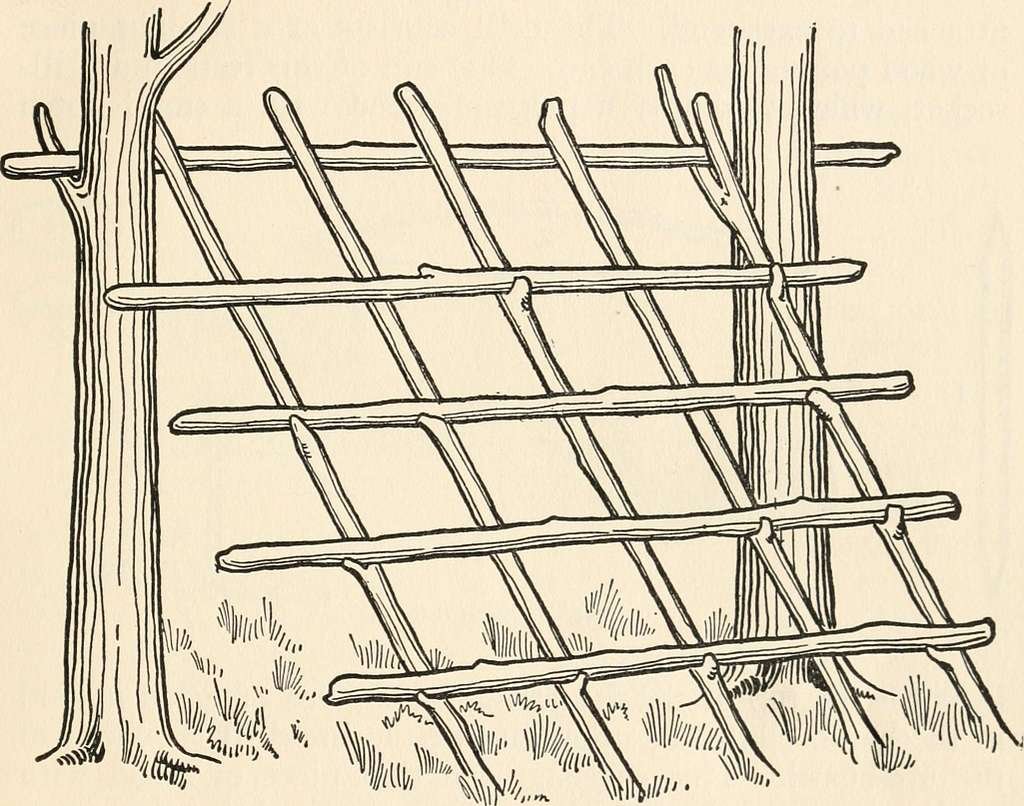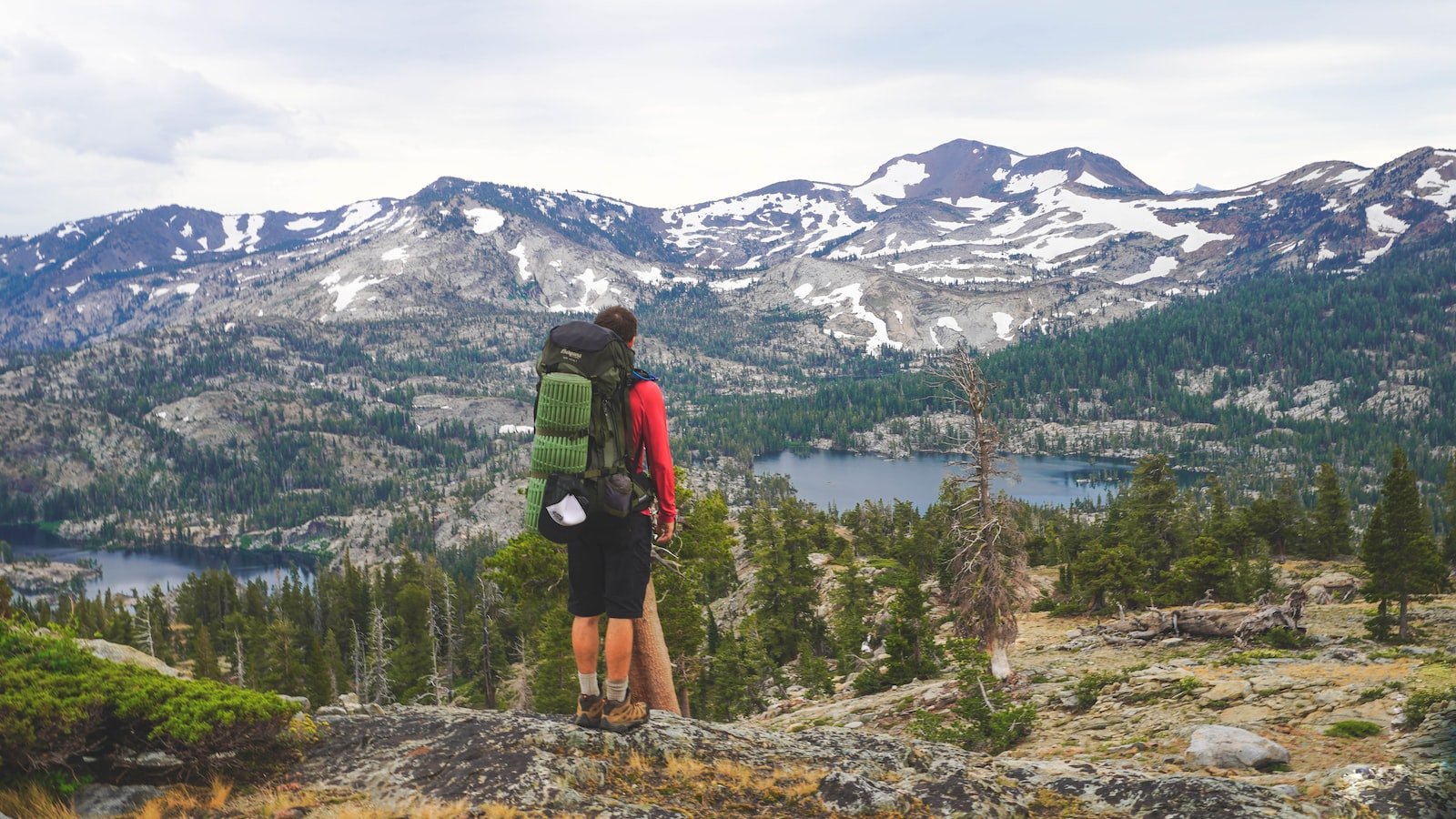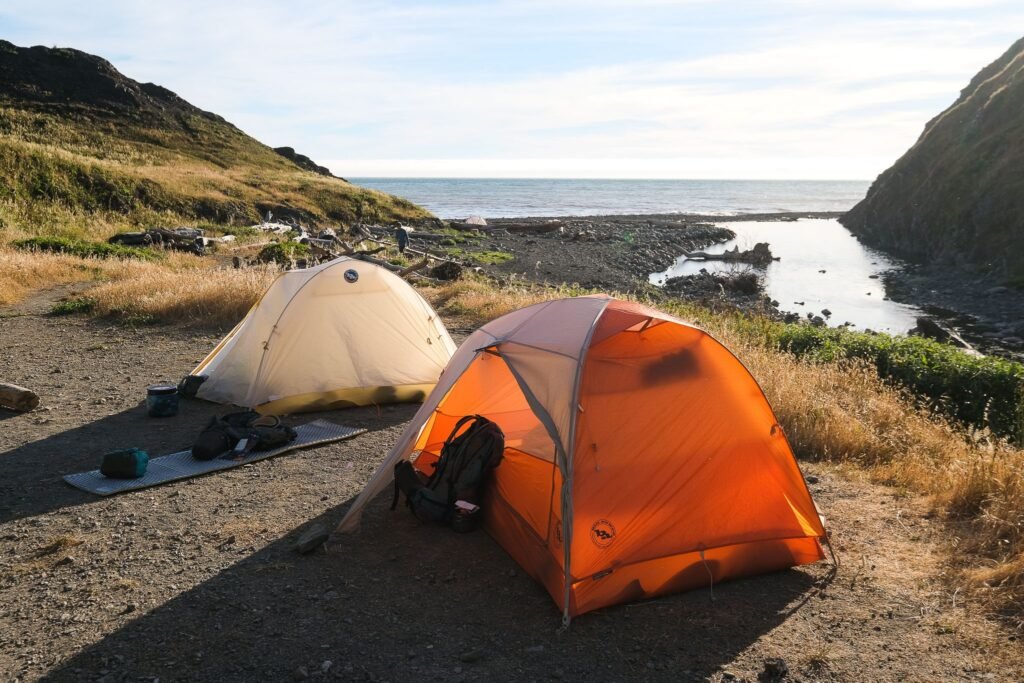Now Reading: Wilderness Signaling: How to Get Rescued
-
01
Wilderness Signaling: How to Get Rescued

Wilderness Signaling: How to Get Rescued
You find yourself lost and alone in the vastness of the wilderness. The once thrilling adventure has taken an unexpected turn, and panic begins to whisper in your ear. But amidst the fear, a glimmer of hope emerges. You remember the stories of those who were trapped and managed to be rescued against all odds. Their secret? An art as old as time itself: wilderness signaling. In this article, we will delve into the depths of this ancient practice, revealing the ingenious techniques and tools that can guide you towards salvation when all seems lost. So, take a deep breath, keep a steady mind, and let’s explore the art of wilderness signaling, discovering the key to finding your way back to safety.
Table of Contents
- Wilderness Signaling Techniques: An Overview of Essential Methods
- Understanding the Importance of Wilderness Signaling for Survival
- Choosing the Right Signals: Effective Methods to Capture Attention
- Signaling Equipment: Must-Have Tools for Wilderness Survival
- Pro Tips: Maximizing Your Chances of Getting Rescued in the Wilderness
- Q&A
- To Conclude

Wilderness Signaling Techniques: An Overview of Essential Methods
When it comes to the vast and untamed wilderness, being able to effectively communicate can be a matter of life or death. In this section, we will explore a range of essential wilderness signaling techniques that can prove invaluable in dire situations.
Visual Signals:
- Mirror Signals: Reflecting sunlight with a mirror can alert potential rescuers over long distances.
- Smoke Signals: Building a smoky fire during the day or a smoldering fire at night can attract attention.
- Flag Signals: Using brightly colored fabric or clothing to create visible signals or markings.
Audible Signals:
- Whistle or Horn Blasts: Carrying a whistle or horn can help you emit loud and distinct sounds, easily recognizable in the wilderness.
- Shouts and Yells: Using your voice to call for help, forming simple patterns or repeatedly shouting can indicate distress.
- Fire Crackers or Flares: Deploying these loud and visible explosives can relay distress signals to nearby individuals or aircraft.
Written Signals:
- SOS: The internationally recognized distress signal, represented by three short signals, three long signals, followed by three short signals (· · · — · · ·).
- Emergency Messages: Leave written messages in visible locations, providing critical information about your situation and location to potential rescuers.
- Signaling Codes: Learn and use common signaling codes, such as Morse Code, to communicate accurately and concisely.
Remember, each wilderness scenario is unique, so understanding and practicing these methods in advance is crucial. When venturing into the great outdoors, it’s essential to be prepared for the unforeseen and equip yourself with the knowledge of wilderness signaling techniques.

Understanding the Importance of Wilderness Signaling for Survival
Importance of Wilderness Signaling for Survival
In the vast expanse of the wilderness, understanding the art of signaling becomes a vital skill for survival. When stranded or lost in remote areas, effective signaling techniques can mean the difference between life and death. The ability to communicate across great distances with limited resources increases the chances of being located and rescued by potential search parties. So, why is wilderness signaling so crucial?
- Visibility: Wilderness signaling allows individuals to attract attention from afar. By creating visual cues such as smoke, bright colored clothing, or mirrors, one can catch the eye of search teams, aircraft, or passing hikers.
- Communication: Signaling not only alerts others to your presence but also facilitates important communication. Utilizing universal distress signals like the SOS (· · · – – – · · ·) or wilderness-specific signals can help convey messages of urgency and seek assistance.
- Direction: Signaling can aid in guiding search parties toward your location. By leaving markings on trees, rocks, or the ground, one can create a trail leading to safety or indicate areas of interest, like water sources or shelters.
Mastering the various techniques of wilderness signaling equips individuals with the necessary tools to enhance their chances of survival. Remember, in the wild, effective communication can make all the difference, turning a desperate situation into a hopeful one.

Choosing the Right Signals: Effective Methods to Capture Attention
When it comes to capturing attention, choosing the right signals is crucial. In a world full of distractions and information overload, it is essential to stand out and make an impact. Here are some effective methods to ensure your message gets noticed and resonates with your audience:
- Visual Appeal: Incorporate eye-catching design elements, such as vibrant colors, compelling imagery, and clean layouts. Utilize bold fonts to emphasize key points and make important information standout. Remember, a visually appealing presentation can grab attention even before the content is fully absorbed.
- Powerful Headlines: Craft attention-grabbing headlines that pique curiosity and entice readers to delve into your content. A well-crafted headline can spark intrigue and make your audience eager to explore what you have to say. Experiment with different techniques, such as asking intriguing questions or utilizing persuasive keywords to make your headlines stand out.
- Engaging Storytelling: Connect with your audience on a deeper level by using storytelling techniques. Humans are hardwired to respond to narratives, so use anecdotes, case studies, or personal experiences to draw your readers in. Make sure your stories are relevant, relatable, and compelling, creating an emotional connection that keeps your audience captivated.
By implementing these effective methods, you can increase your chances of capturing attention, engaging your audience, and ultimately achieving your desired outcomes. Remember, understanding your target audience and tailoring your signals specifically for them will greatly enhance your chances of making a lasting impression.

Signaling Equipment: Must-Have Tools for Wilderness Survival
When venturing into the wild, being prepared is essential. Whether you’re an avid hiker or an experienced survivalist, having the right signaling equipment can make all the difference between a successful rescue and being lost in the wilderness. Here are some must-have tools to ensure you can attract attention and get the help you need:
- Whistle: A small yet powerful tool, a whistle can carry your distress signal over long distances when your voice falls short. Its shrill sound can cut through the densest forests and rugged terrains, alerting potential rescuers of your location.
- Mirror: No, not just any ordinary mirror. A specialized signaling mirror designed to reflect sunlight with exceptional brightness. With a flick of your wrist, you can signal for help from afar. Be sure to use the mirror during the day to maximize visibility.
- Flare Gun: A flare gun is a game-changer when it comes to signaling for help. With a bright and colorful burst, it catches attention like no other. Ensure you pack extra flares so you’re ready for multiple attempts if needed. Remember to follow safety precautions when using a flare gun.
- Signal Fires: When you need to make a visually striking statement, a signal fire is your go-to. Gather dry branches, leaves, or other combustible materials and create a controlled fire to produce thick smoke. The contrast against the sky can catch the eye of search and rescue teams, leading them straight to you.
- Personal Locator Beacon (PLB): Investing in a PLB is an invaluable safety measure for any wilderness adventurer. These handheld devices use GPS technology to transmit your distress signal to emergency services, providing them with your precise location for a swift and accurate rescue operation.
In a life-or-death situation, the right signaling equipment equips you with the tools needed to make yourself visible to potential rescuers. Remember, always educate yourself on proper usage and techniques to maximize the effectiveness of these signaling tools. Stay safe, be prepared, and enjoy your wilderness adventures with peace of mind!
Pro Tips: Maximizing Your Chances of Getting Rescued in the Wilderness
When venturing into the wild, it’s essential to be prepared and equipped with the knowledge to increase your chances of being rescued in case of an emergency. Here are some pro tips to keep in mind:
- Leave a Detailed Trip Plan: Before embarking on your wilderness adventure, make sure to inform someone reliable about your trip plan, including your destination, estimated time of return, and the route you’ll be taking. This information is crucial for rescuers to narrow down their search area if needed.
- Pack Essential Survival Gear: Always carry a well-stocked survival kit, which should include items like a compass, signaling devices such as a whistle or mirror, fire starters, extra food and water, emergency shelter, and a first aid kit. These tools can significantly improve your chances of survival while awaiting rescue.
- Stay Put and Make Yourself Visible: If you find yourself lost or stranded, resist the temptation to wander in hopes of finding help. Instead, stay in a safe location and create clear signals for potential rescuers by using brightly colored clothing, reflective materials, or strategically placed markers. This will greatly assist search parties in locating you.
- Know Basic Wilderness Navigation: Understanding how to use a compass and read maps can be a life-saving skill. Before heading out, familiarize yourself with these tools and learn how to identify landmarks, track your progress, and navigate back to safety in case you get disoriented.
- Observe and Utilize Natural Resources: Take advantage of the natural resources around you. Learn how to find and purify water, identify edible plants, and create makeshift tools or shelter using materials found in the wilderness. These skills not only aid in your survival but also increase your chances of staying healthy until help arrives.
Remember, staying calm, being prepared, and having the essential skills can make all the difference when it comes to getting rescued in the wilderness. Stay proactive, maintain a positive mindset, and don’t underestimate the power of knowledge and preparation in ensuring your safety.
Q&A
Q: What are some effective wilderness signaling techniques to attract attention and get rescued?
A: Some effective wilderness signaling techniques include using bright-colored clothing, building a signal fire, creating an SOS sign on the ground, and using a whistle or mirror to reflect sunlight.
Q: Can smoke signals be an effective way to signal for help in the wilderness?
A: Yes, smoke signals can be very effective in attracting attention during daylight hours. By creating a large, continuous, and contrasting column of smoke, you increase your chances of being spotted by rescuers or aircraft.
Q: Are there any universal distress signals that can be recognized worldwide?
A: Yes, the international distress signal SOS (· · · – – – · · ·) is recognized globally. Additionally, three short whistle blasts or three flashes of light are widely known as signals of distress.
Q: What are some alternative ways to signal for help when you don’t have any equipment?
A: If you find yourself without any signaling equipment, you can make noises by shouting, banging on objects, or using natural resources like rocks or logs to create loud sounds. These noises can help attract attention and alert others to your presence.
Q: How can the use of mirrors be effective in signaling for help?
A: A mirror can be a powerful signaling tool by reflecting sunlight towards potential rescuers or passing aircraft. To signal, aim the mirror by aligning your line of sight with the target, then flash the light repeatedly towards them.
Q: How important is it to create a signal fire when trying to get rescued?
A: Building a signal fire is crucial when trying to get rescued, as it can be seen from afar. Use dry materials to create a smokeless fire during the day or a smokey fire during the night. Ensure that the fire is in an open area and keep it well-maintained to increase its visibility.
Q: What should be done if rescuers are spotted or heard in the distance?
A: If you spot or hear rescuers in the distance, it’s important to make yourself as visible and audible as possible. Wave bright clothing or an improvised signaling device, and make loud noises like shouting or blowing a whistle to draw their attention towards your location.
To Conclude
As the sun dips below the horizon, painting the vast wilderness with hues of crimson and gold, we conclude our journey through the ancient art of wilderness signaling. Throughout this enlightening expedition, we have explored the intricate ways in which humans have tapped into their resourcefulness and ingenuity to beckon the help of wandering eyes in times of dire need.
Whether lost in the unforgiving embrace of dense forests or stranded amidst the rugged peaks, the knowledge we have gleaned is a beacon of hope for adventurers and dreamers alike. We have delved into an array of tactics, ranging from the most rudimentary yet effective methods, to harnessing modern technology without abandoning the spirit of survival.
From the echoing reverberations of percussions in the distance to the billowing clouds of smoke rising from a carefully constructed fire, these signals transcend mere communication. They carry with them the weight of desperation, preserving trust that somewhere beyond the vast expanse of nature, a savior awaits with open arms.
In our quest to understand the essence of this ancient craft, we explored the artistry of the wilderness itself. Through humble rocks arranged with purpose, flashlights blinking in sync with the beat of a panicked heart, or even the choice not to make a sound—an eloquent language formed that resonates with both primal instincts and the trials of survival.
However, it is not solely the tools or gestures employed that hold the power, but the profound sense of resilience and hope that they represent. It is against the backdrop of rugged landscapes and untamed beauty that we discovered the strength within ourselves to overcome seemingly insurmountable obstacles.
As we bid farewell to the shadows of untamed landscapes and the captivating lore of wilderness signaling, let us remember the timeless lessons that echo through time. No matter how tall the mountains rise or how dense the forests grow, the human spirit remains indomitable, forever striving for rescue, companionship, and triumph against all odds.
So, as you venture forth into uncharted realms teeming with untold wonders, may this knowledge be imprinted upon your soul, serving as a testament to the resilience and ingenuity that lies dormant within. And remember, in times of desperate need, when the piercing cry of the wilderness beckons, you now possess the ability to find your way back home.
As an affiliate, my content may feature links to products I personally use and recommend. By taking action, like subscribing or making a purchase, you’ll be supporting my work and fueling my taco cravings at the same time. Win-win, right?
Want to read more? Check out our Affiliate Disclosure page.





